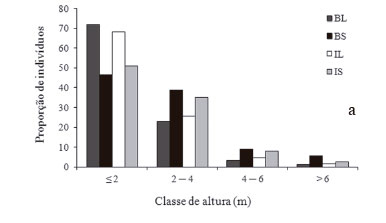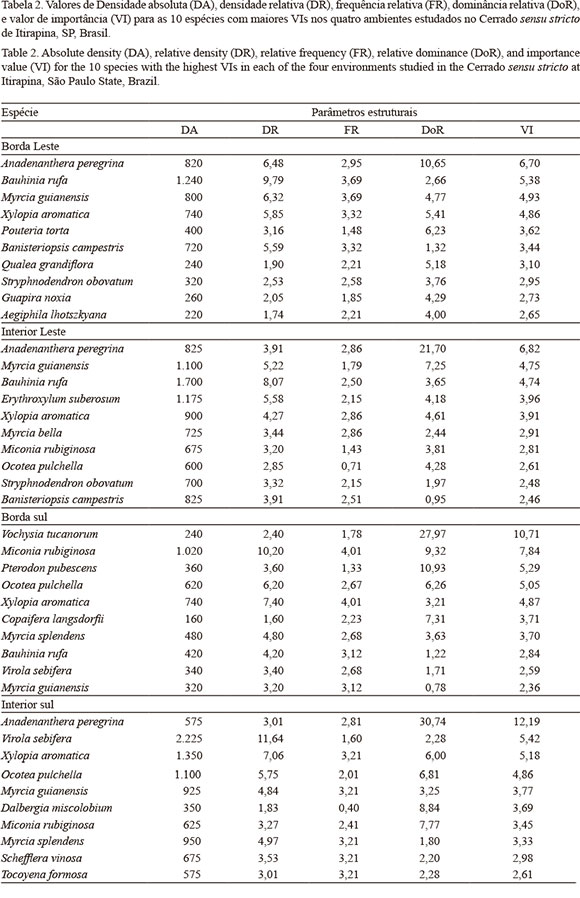Edges are transition areas between two adjacent ecosystems that can be originated by natural or anthropogenic events. The edge influence includes both direct effects, related to changes on microenvironmental factors, as well as indirect effects, related to changes in species interactions. Additionally, some studies suggest that microenvironmental factors are altered by the cardinal orientation of the edge. The present study aimed to evaluate the influence of edge on microenvironmental factors, local soil conditions, woody vegetation structure, and species richness in a Cerrado sensu stricto at Itirapina, São Paulo State, Brazil. Specifically, we investigated whether microenvironmental factors (relative humidity (%), photosynthetic active radiation (PAR), temperature and percentage of canopy cover), soil conditions and vegetation composition differ among plots (36 plots of 25 × 2 m spaced 50 m apart) distributed on the edge and in the interior, facing east and south sides of the Cerrado. We sampled all woody trees and treelets with circumference ≥ 3 cm at 30 cm from its ground base within each plot. The microenvironmental variables relative humidity, PAR (photosynthetic active radiation), temperature and percent of canopy openness, and the soil samples (0-20 cm deep) for nutrients and texture analyses, were all collected at three points within each plot. We recorded a total of 120 woody species distributed among 40 plant families. Among the structural parameters of vegetation, only the absolute density was significantly higher in the interior south of the Cerrado. The microenvironmental factors were significantly different between the east and south sides, but did not differ between edge and interior. Therefore, based on the environmental and structural parameters we evaluated, there was no evidence of edge influence in the Cerrado studied. However, the east and south faces and associated microenvironmental factors, and the presence of some nutrients in the soil, such as Mn, affected the Cerrado vegetation structure and species composition. Our results highlight the importance of taking into account the cardinal orientation in addition to the soil nutrient and microenvironment parameters to better understand the factors influencing the vegetation at a local scale.
diversity; edge influence; microclimate; savanna; similarity; species richness









